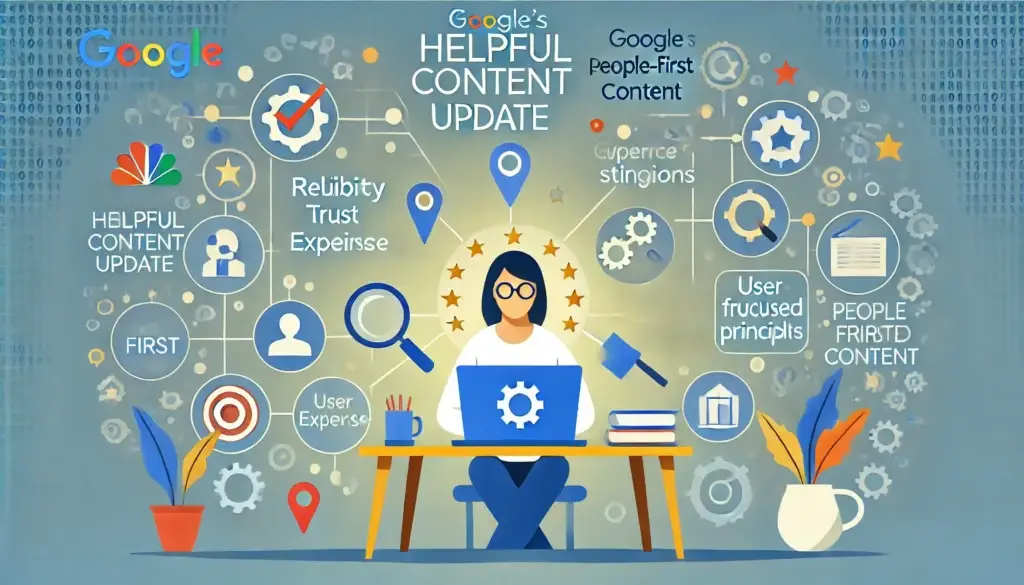Analyzing Google’s Helpful Content Signals and Their Potential Connection to Core and Spam Updates
Google updates often spark discussions among SEOs, particularly concerning the Helpful Content Update (HCU). By examining established facts, it’s possible to assess whether a website is genuinely affected by HCU-related signals.

Table of Contents
ToggleUnderstanding Black Box Systems
To interpret the effects of Google updates, it’s crucial to grasp the concept of black box systems. This knowledge helps avoid misconceptions about the impacts of core and spam updates.
A black box system is one where inputs and outputs are visible, but the internal processes remain unknown. In Google’s case, the algorithm operates like a black box with countless interlinked processes, making it nearly impossible to isolate the impact of a single factor.
This complexity is particularly evident with the HCU. Since March 2024, the HCU has been integrated into Google’s core algorithm, making it a component of the overall ranking system rather than a standalone entity.
Similarly, studies attempting to infer ranking factors from search result data often fall short. These analyses, while popular, lack reliability due to the opaque nature of Google’s algorithms.
The Evolution of the Helpful Content Update
First introduced in 2022 as the “Helpful Content Update,” this system was designed to prioritize original, user-focused content over material created solely for search engine rankings. In March 2024, Google integrated this system into its core algorithm.
Now a permanent part of the ranking system, the HCU’s signals are constantly at work. Unlike its earlier iteration, it no longer causes periodic ranking drops that can be directly attributed to HCU updates. Instead, its signals function as part of the broader ranking ecosystem, which Google continuously adjusts.
Google’s announcements no longer highlight updates to the HCU. However, if an update mentions enhancements to identifying “people-first” content, it’s reasonable to infer that aspects of the HCU were adjusted.
Google’s explanation reads:
“Announced in 2022 as the ‘Helpful Content Update,’ this system was designed to ensure people see original, helpful content written by people, for people, in search results, rather than content made primarily to gain search engine traffic. In March 2024, it evolved and became part of our core ranking systems, as our systems use a variety of signals and systems to present helpful results to users.”
Key Considerations for HCU Signals
It is impossible to definitively attribute ranking drops during a core algorithm update to HCU signals alone. The integrated nature of these signals means their effects are intertwined with numerous other ranking factors.
The only exception occurs when Google specifically mentions updates to “people-first” content signals. Even then, identifying the exact impact requires thorough analysis of the affected site, rather than simply blaming the HCU.

Diagnosing the Effects of HCU
Google advises referring to its documentation on “people-first” content to understand and address potential HCU-related issues. “People-first” content prioritizes user benefit over search engine optimization.
The guidelines emphasize:
Content and Quality: Ensure content is informative, engaging, and useful.
Expertise: Reflect credible knowledge in the subject matter.
Page Experience: Optimize for user-friendly interactions.
People-First Content: Focus on users, not search engines.
Search Engine-First Content: Avoid creating content purely for rankings.
Additionally, Google’s systems evaluate aspects of Experience, Expertise, Authoritativeness, and Trustworthiness (E-E-A-T). Among these, trust is the most critical factor, with others contributing to its establishment.
As Google explains:
“After identifying relevant content, our systems aim to prioritize those that seem most helpful. To do this, they identify a mix of factors that can help determine which content demonstrates aspects of experience, expertise, authoritativeness, and trustworthiness, or what we call E-E-A-T.”
Final Takeaway
The integration of HCU signals into Google’s core algorithm underscores the importance of creating user-centered content. While traditional SEO focuses on keywords and rankings, the “people-first” approach shifts the emphasis to delivering genuine value to users.
By adhering to Google’s guidelines on quality, expertise, and user-centric content, creators can better align their efforts with the principles of the modern ranking system.

